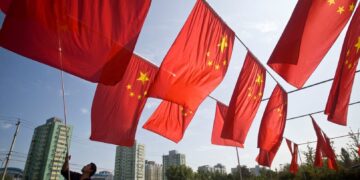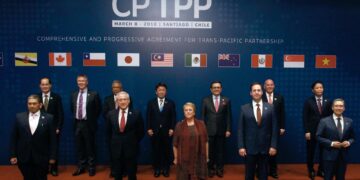By Baker & McKenzie
Companies see huge opportunities in the Association of Southeast Asian Nations (ASEAN) block as mega-regional trade initiatives work in tandem to improve connectivity and the overall business environment in the region, according to a Baker & McKenzie report released in May.
The ASEAN Connections report is based on a survey of 144 leaders of large multinational companies regarding how mega-regional initiatives shape the ASEAN business environment and how they impact their business strategy.
Companies say the mega-regional initiatives — the Trans-Pacific Partnership (TPP), the Regional Comprehensive Economic Partnership (RCEP), and China’s One Belt One Road (OBOR) — deepen regional integration. The companies rated TPP and RCEP as particularly effective change agents; 85 percent expect TPP and RCEP to boost economic integration in the region, and predicted growth with similar proportions in both intraregional trade (85 percent) and investment (84 percent). These predictions are slightly higher than the rates expected from OBOR, which was 63 percent for both intraregional trade and investments.
“These mega-regional trade initiatives are complementary in terms of driving growth in the region and ASEAN is certainly set to benefit from increased inter- and intra-regional trade and investments flows, as well as the potential infrastructure investment that China will bring into the region. ASEAN will, as a result, be ideally positioned to sit in the centre of global value chains,” aid Eugene Lim, Asia Pacific Head of Baker & McKenzie’s Trade & Commerce practice. “It is therefore imperative that companies start factoring in these initiatives in their business strategic planning. Otherwise, it could mean missed opportunities for some, and for others, eroding market shares.”
Membership to TPP can also afford member countries in ASEAN a competitive advantage over non-signatories in terms of attracting inward investment, according to 69 percent of the respondents. Countries in Asia, such as Vietnam and Malaysia, are said to gain most from TPP, with Vietnam seeing a possible 8.1 percent boost to its real national income by 2030, and Malaysia a 7.6 percent increase by the same year. In fact, 74 percent of the companies expect an increase in Asia’s share of the global revenue, while 65 percent of the firms expect to see an increased demand for their products and services. 56 percent of the respondents also expect intellectual property rights protection to improve.
While there is some anti-trade agreement sentiment being expressed in some signatory countries, 62 percent of the companies surveyed predict that TPP will be ratified within the next three years, and close to 95 percent see the Partnership ratified within five years. Meanwhile, almost 44 percent believe RCEP will become operational within a three-year period, and around 97 percent within a five year period. The report highlights that although it may not be until 2021 when TPP will have significant impact on trade, manufacturing companies are already beginning to leverage ASEAN as a single market and production base and locate different aspects of the manufacturing process in places with the most appropriate skills, costs, resources and connectivity Further integration, fuelled by these mega-regional initiatives, will also present similar organizational opportunities for companies in the service sectors.
One Belt One Road
Even though OBOR is expected to help draw the region together by creating infrastructure-related investment opportunities that can then facilitate cross-border investments in the manufacturing and service sectors, 80 percent of companies see that OBOR’s greatest impact lies in the extension of Chinese influence throughout the region. In fact, 59 percent of the surveyed companies expect OBOR to lead to partnerships with Chinese companies, while around 50 percent of the respondents believe OBOR will increase M&A activities and investments in the ASEAN region.
Of somewhat greater concern, only 26.5 percent of the companies indicate that OBOR has begun to influence their strategic planning. This trend, however, is expected to change, with 53 percent of the companies suggesting that OBOR will be of greater relevance to their businesses in the next three years. Around 70 percent of the companies are already getting ready for OBOR by undertaking initiatives that help to improve their competitiveness. These preparations include building up human capital capabilities; sourcing for project development opportunities; looking for joint venture partners; looking for potential acquisitions and establishing new representative offices.
“One Belt One Road may still seem to be a distant goal for some, but the reality is that many businesses are already taking the initiative upon themselves in order to get ready for the opportunities and challenges that may arise. Competition for talent, especially those with Chinese language skills, networks and experience, is bound to increase, while competition among multinationals for joint venture partnership or acquisition opportunities with Chinese companies will intensify,” stressed Bee Chun Boo, Partner at Baker & McKenzie in Beijing.
Boo further explains, “Chinese and Western companies are different in terms of culture, management models and operating styles. Also adding to the mix is the cobweb of local and international laws to which companies need to comply ‑ not to mention the full spectrum of political, security and economic risks.”
As such, she advised businesses wishing to capitalize on the opportunities arising from OBOR to “engage advisors ‑ be it legal or financial ‑ who not only understand the local and international business and regulatory environment, but more importantly, are also able to offer on-the-ground assistance at both ends of the deal and navigate through some of the cultural and business nuance that often arise in cross-border transactions.”
In terms of benefitting from OBOR, the Report reveals that companies see infrastructure and construction industries stand to gain the most from OBOR, followed by the manufacturing, e-commerce and logistic sectors. From a geographic perspective, Indonesia stands to be the biggest beneficiary among the ASEAN economies, with approximately US$87.4 billion identified in OBOR-related pipeline infrastructure projects, roughly double the US$42 billion each that the Philippines and Vietnam will host.
About the Report
“ASEAN Connections: How mega-regional trade and investment initiatives in Asia will shape business strategy in ASEAN and beyond” is based on a survey of 144 companies from a broad mix of industries, with 21.5% of respondents coming from the financial services sector, 12.5% from professional services and 10.4% from IT& software. Respondents generally worked at large companies ‑ 35% came from firms with revenue of more than US$10 billion, while 29% came from firms with revenue of between US$1 billion and US$10 billion. The geography where the respondents’ companies are based spread across Europe (37.4%), North America (27.3%) and ASEAN (21.6%) The majority of the respondents (77.1%) worked at companies that are primarily business-to-business (B2B).
About the author: Founded in 1949, Baker & McKenzie advises many of the world’s most dynamic and successful business organizations through our 12,000 staff in 77 offices in 47 countries. The Firm is known for its global perspective, deep understanding of the local language and culture of business, uncompromising commitment to excellence, and world-class fluency in its client service. Global revenues for the fiscal year ended June 30, 2015, were US$2.43 billion. Eduardo Leite is Chairman of the Executive Committee.



































